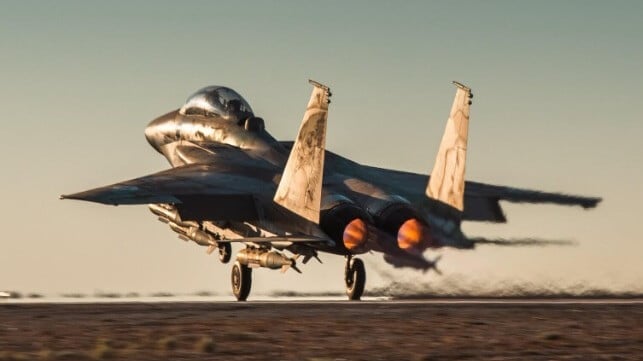The Israeli Attack: Muted But Effective

The expected Israeli reprisal attack on Iran executed on the night of October 26 was less ambitious than many Israelis had hoped for, but may nonetheless succeed in bringing a halt to the series of tit for tat exchanges between Israel and Iran. With no attacks mounted on oil infrastructure, it looks also as if collateral effects on trade and shipping will be limited.
Early indications are that the Israeli operation avoided Jordanian airspace, instead flying over Syria, where Israel has previous experience suppressing the Syrian air defense system, then launching long-range cruise missiles at the targets in Iran whilst over Iraqi airspace.
The Iraqi Air Force is still building its air defense coverage and capability, having focused since the dismantling of the Saddam-era air force on providing support for ground operations; what capability it might have to interfere with an Israeli intrusion could have been disrupted by Israeli Air Force electronic warfare assets.
Iraqi air space would then have been a relatively benign environment for the Israelis to carry out the necessary inflight refueling operations that the 1,600-kilometer range of the mission would necessitate. The range of the air-launched cruise missiles that Israel is likely to have used, and identified in the leaked US intelligence reports noting preparatory activity at Israeli bases, would mean that the attacking aircraft may not have needed to cross into Iranian airspace. If any intrusion was necessary, it would have been carried out by undetectable F-35 stealth fighters and by pilotless long-range drones.
The first wave of the Israeli attack appears to have been designed to suppress Iranian air defense assets, with the second and third waves targeted against Iranian missile and drone production facilities and sites that had been used to launch the Iranian attack on Israel on October 1. Of the 100 aircraft reported to have been involved in the operation, about 20 are likely to have been refuelers and electronic suppression aircraft, leaving 80 that are likely to have launched cruise missiles - which probably equates to about 20 targets attacked. By launching the operation on a Friday night, Iranian casualties will have been minimized.
Strikes were reported in the Tehran, Karaj, Isfahan and Shiraz areas. One target seen smoldering in social media postings was a metal fabrication plant in the Tehran suburb of Shamsabad, which was highlighted in Israeli reporting as being associated with missile and drone manufacture several months ago.
Identification of most of the other targets will come in the next few days, as analysts use commercial satellite coverage to inspect areas where known potential targets are located and Iranians post social media pictures of the damage done. Iran is evidently trying to play down the damage, but the Israeli attack will have been designed to hit critical nodes in Iranian infrastructure. Of particular interest, it is difficult to imagine that the Israelis have foregone completely the opportunity to disrupt the Iranian nuclear weapons program, and the nuclear warhead configuration facility at Parchin appears to have been hit.
Israel may have fielded the largest long-range strike force that it could muster. But using the Americans and intermediaries in the days before the attack, and then warning Iran directly of the impending attack, it may have succeeded in persuading Iran that it was restricting the damage as a fair exchange for Iran then abating its response. Time will tell.
